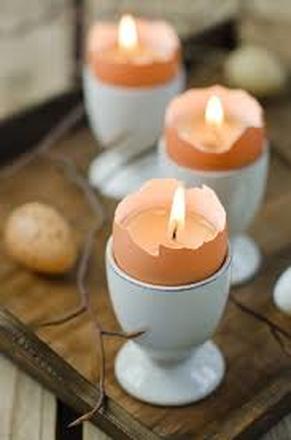
As your guests arrive, it is your responsibility to set the tone for the conversation. Make sure that you introduce all the guests to each other if they are not already acquainted. It is not necessary to mention what any of them do for a living, since afternoon tea conversation does not focus on the guests’ careers or their social status. You might place an interesting serving piece or work of art in the room as a focal point for conversation.
In the traditional Japanese tea ceremony, it is customary for the guests to handle the items that will be used during the service and admire them, commenting on the colors, textures, connection with the season, etc. A guest might pick up one of the tea cups, turn it around in his hands, and even turn it over and look at the bottom. This process is called haiken in Japanese, and is roughly translated as “admiring the tea objects.” There may not be an equivalent word in English.
American guests may have been trained as children not to pick up pieces of china and look at the brand name on the bottom. Therefore, you will need to guide your guests to focus on the items that you have placed in the tea environment for their enjoyment. Imagine that your first two guests have arrived and are commenting gratefully about how cozy it is by the fire compared to the harsh weather outside. When your third guest arrives, she walks through the door complaining loudly about another driver who cut her off in traffic on her way to your home. As she prepares to recite this entire narrative to everyone else in the room, you gently intervene by guiding her to a comfortable chair and saying, “We’re so glad to see you, Monica. Why don’t you sit next to this pine-scented candle. I was thinking of you when I made it. Can you smell the pine?”
Incidentally, if you do use scented candles or potpourri to create the setting for afternoon tea, you will want to extinguish them and whisk any other scented items away before the third element of the afternoon—sharing food—begins. Many people find non-food related scents disturbing while they are eating.
In the traditional Japanese tea ceremony, it is customary for the guests to handle the items that will be used during the service and admire them, commenting on the colors, textures, connection with the season, etc. A guest might pick up one of the tea cups, turn it around in his hands, and even turn it over and look at the bottom. This process is called haiken in Japanese, and is roughly translated as “admiring the tea objects.” There may not be an equivalent word in English.
American guests may have been trained as children not to pick up pieces of china and look at the brand name on the bottom. Therefore, you will need to guide your guests to focus on the items that you have placed in the tea environment for their enjoyment. Imagine that your first two guests have arrived and are commenting gratefully about how cozy it is by the fire compared to the harsh weather outside. When your third guest arrives, she walks through the door complaining loudly about another driver who cut her off in traffic on her way to your home. As she prepares to recite this entire narrative to everyone else in the room, you gently intervene by guiding her to a comfortable chair and saying, “We’re so glad to see you, Monica. Why don’t you sit next to this pine-scented candle. I was thinking of you when I made it. Can you smell the pine?”
Incidentally, if you do use scented candles or potpourri to create the setting for afternoon tea, you will want to extinguish them and whisk any other scented items away before the third element of the afternoon—sharing food—begins. Many people find non-food related scents disturbing while they are eating.
